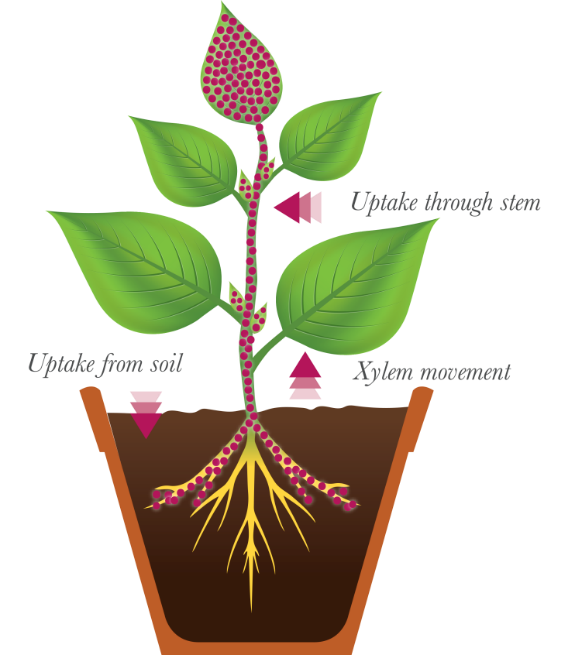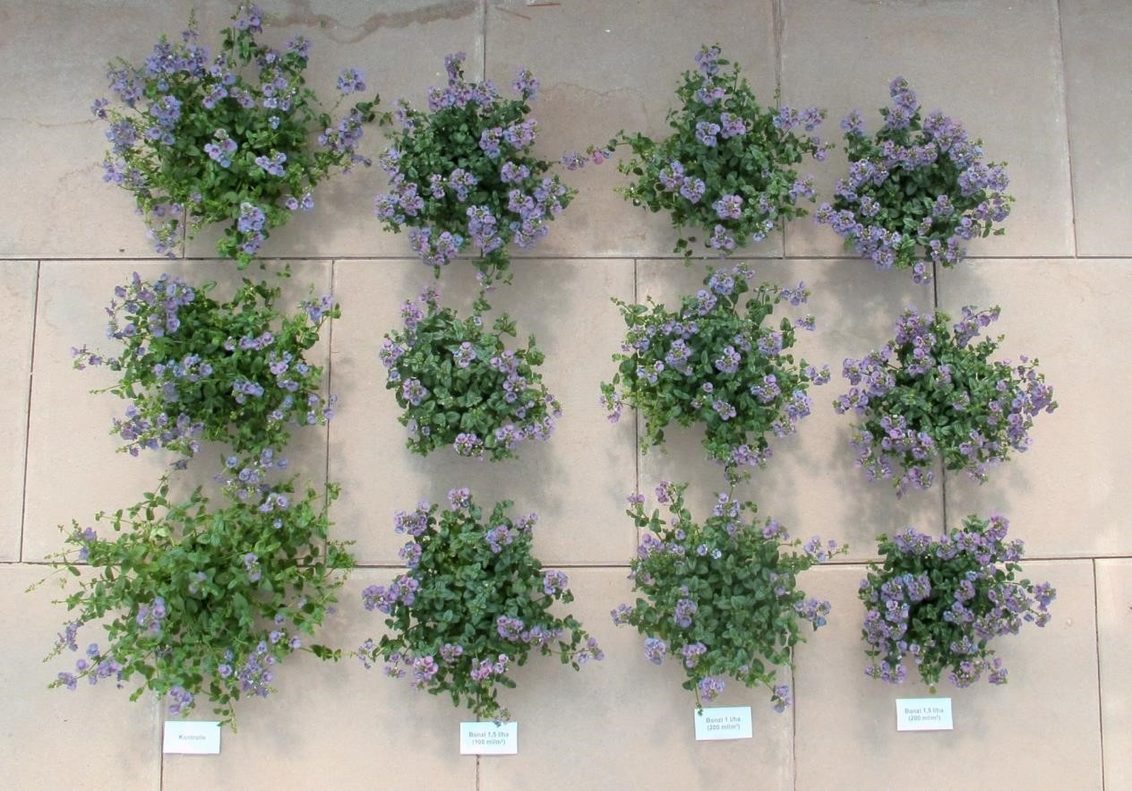Plant Growth Regulators: everything you need to know
If you’ve not used a Plant Growth Regulator for a while It might be worth thinking about their benefits again and the variables involved with putting a good PGR programme together.
What are PGRs?
Plant Growth Regulators are synthetic or biological compounds that positively benefit and modify the plants growth and development. They are widely used in many plants to shorten the internodes and create a denser, tighter and smaller plant.
Why use them?
Here at Syngenta we are very familiar with Bonzi, and we have many customers who use it to help control, improve the shape & uniformity of their plants creating a better, more uniform and profitable crop.
At first glance there is an array of PGRs available for use in horticulture: a wide range of claims, rates and modes of action but understanding how to use them comes down to what you are trying to achieve.
The challenge
PGRs are a funny thing to give people advice on, we know they’ll be beneficial to you and the crop, but there are a huge amount of variables and desired outcomes to consider when putting a program together that include:
- Application rates
- Application windows
- Water volumes
- Plant
- Species
- Variety
- Age
When asked for advice it generally results in a conversation discussing all of the above but ultimately, it’s very difficult to give exact recommendations above and beyond what is stated on the label.

But here’s what we can do
- Tell you the benefits that we’ve seen from good use of Bonzi
- Give you an indication and a starting place
- Offer best practice application advice
- Tell you what’s on the label and your legal responsibility
- Tell you what not to do
Quite quickly you’ll know more than we do about its best use for you.
The benefits we’ve seen
- Improved uniformity of shape & size
- Better flowering uniformity
- Deliver robust and compact plants
- Improved profitability per m²
- Quick response - within 3-5 days
- Long lasting effect minimum 3 weeks
- Safe to crops & to environment
- Very good crop compatibility
- Support crop production planning
Where to start
As always, the label is always the best place to start. Don’t forget you have a legal responsibility to read it prior to using a product.
Here you’ll find a whole list of good advice and starting points for some plant species. We give an indication of rate and timing. This is based on trial results and practical experiences. However, the effect can differ depending on things like crop condition, environmental conditions, water volume and variety.
|
Rate of use |
Minimum interval between applications |
Maximum number of applications |
|
3-40ml/10 litres of water |
3 days |
10 |
|
40-100ml/10 litres of water |
7 days |
4 |
|
100-250ml/10 litres of water |
- |
1 |
Best practice application advice
The key thing to note is that Bonzi is absorbed by the roots and stems. This is important to know for a couple of reasons.
Good coverage of the leaf is essential and any product reaching the soil will have a long-term impact on the growth of that plant. This is great news as it means you can achieve a good period of growth suppression from the product.
The downside to this is that any over spill onto the floor will be taken up by the next crop. Its impact on the subsequent crop will be affected, so a well targeted application to the leaf, whilst minimising run off is essential, not only to the current crop but to the next crop too.
- Avoid tank mixing with other products as this can influence the effect of Bonzi
- Apply to a dry leaf to minimise the chance of run-off
- After applying, ensure the crop dries prior to overhead watering
- Do not re-use growing media
- Repeated use of Bonzi on crops grown on capillary matting may lead to a build-up of paclobutrazol in the matting which may affect following crops
- Application must be made in a manner to minimise the amount of Bonzi directly reaching the matting

What’s on the label and your legal responsibility
- The maximum concentration must not exceed 25ml per litre of water
- A minimum interval of 7 days must be observed between applications at a rate of between 4 and 10ml product per litre water
- A minimum interval of 3 days must be observed between applications at a rate of between 0.3 and 4ml product per litre water
- Treatment must only be made under ‘permanent protection’ situations which provide full enclosure (including continuous top and side barriers down to below ground level) and which are present and maintained over a number of years
- Reasonable precautions must be taken to prevent access of birds, wild mammals and honeybees to treated crops
- Minimise airborne environmental exposure by closing vents, doors and other openings during and after application until the product has fully settled
- The product must not be used on ornamentals in compost where the compost will be re-used for cultivation of edible crops for human or animal consumption
What not to do
- Do not mix Bonzi with other spray chemicals
- Do not spray onto a wet leaf
- Do not apply to a stressed plant
- Avoid top watering for 24 hours after application
- Only use Bonzi on pot and container grown plants
- Do not use compost from treated plants for subsequent crops
- Do not allow run-off solution onto soil required for a succeeding crop
- Ensure you wash pots and boxes thoroughly before re-use
Plant growth regulator programmes needs some investment of your time. The benefits are well worth it if you haven’t used a PGR for a while, so they are worth another look.
Bonzi on different crops
AZALEA
To produce compact pot plants with improved and earlier flowering and reduced vegetative shoot production.
Timing and number of applications
Apply once as a spray shortly before or after placing in the forcing house.
Rates of Use: Use 250 ml per 10 litres water.
BEDDING PLANTS
To control excessive growth and produce sturdy plants.
Timing and number of applications
Apply as a spray from 2 weeks after pricking out when plants have made new growth. Repeat application when necessary. Maximum 10 applications
Rates of Use: Use 12.5 ml per 10 litres water.
Varieties: BONZI has been used on Ageratum, Alyssum, Campanula, Cineraria, Geranium, Impatiens, Lobelia, Mesembryanthemum, Nemesia, Pansy, Petunia*, Phlox and Stocks. Little effect or variable effects have been reported on Marigold, Tagetes, Salvia, Dianthus and Sweet Pea.
* Note: Treatment may reduce “Picotte” effect on certain cultivars.
BEGONIA ELATIOR
To produce compact plants.
Timing and number of applications
Apply as a spray at 7-10 cm plant height. Up to a maximum of 10 applications can be made.
Rates of Use: Use 12.5 ml per 10 litres water.
Varieties: BONZI has been used on a number of cultivars. It is recommended that a small area is tested prior to large scale treatment.
KALANCHOE
To produce compact plants.
Timing and number of applications
Apply as a spray when plants are 4 cm high. Further applications may be necessary under vigorous growing conditions. Maximum 10 applications.
Rates of Use: Use 12.5 ml per 10 litres water.
Varieties: The evidence of effectiveness and crop safety on kalanchoe is limited. It is recommended that a small area is tested prior to large scale treatment.
POINSETTIA
To produce compact plants with darker green foliage and enhanced bract red colouration.
Timing and number of applications
Apply after pinching as a spray when regrowth is 3 to 5 cm in length. Further applications can be made if required. Maximum 10 applications.
Rates of Use: Use 12.5 ml per 10 litres water.
Varieties: BONZI has been used on a number of cultivars. It is recommended that a small area is tested prior to large scale treatment.
ROSE
To produce sturdy and compact pot miniature roses.
Timing and number of applications
Apply as a spray when shoots are 5-15 cm long. Repeat after 2-3 weeks if necessary. Maximum 4 applications. The evidence of effectiveness and crop safety on rose is limited.
Rates of Use: Use 100 ml per 10 litres water.
